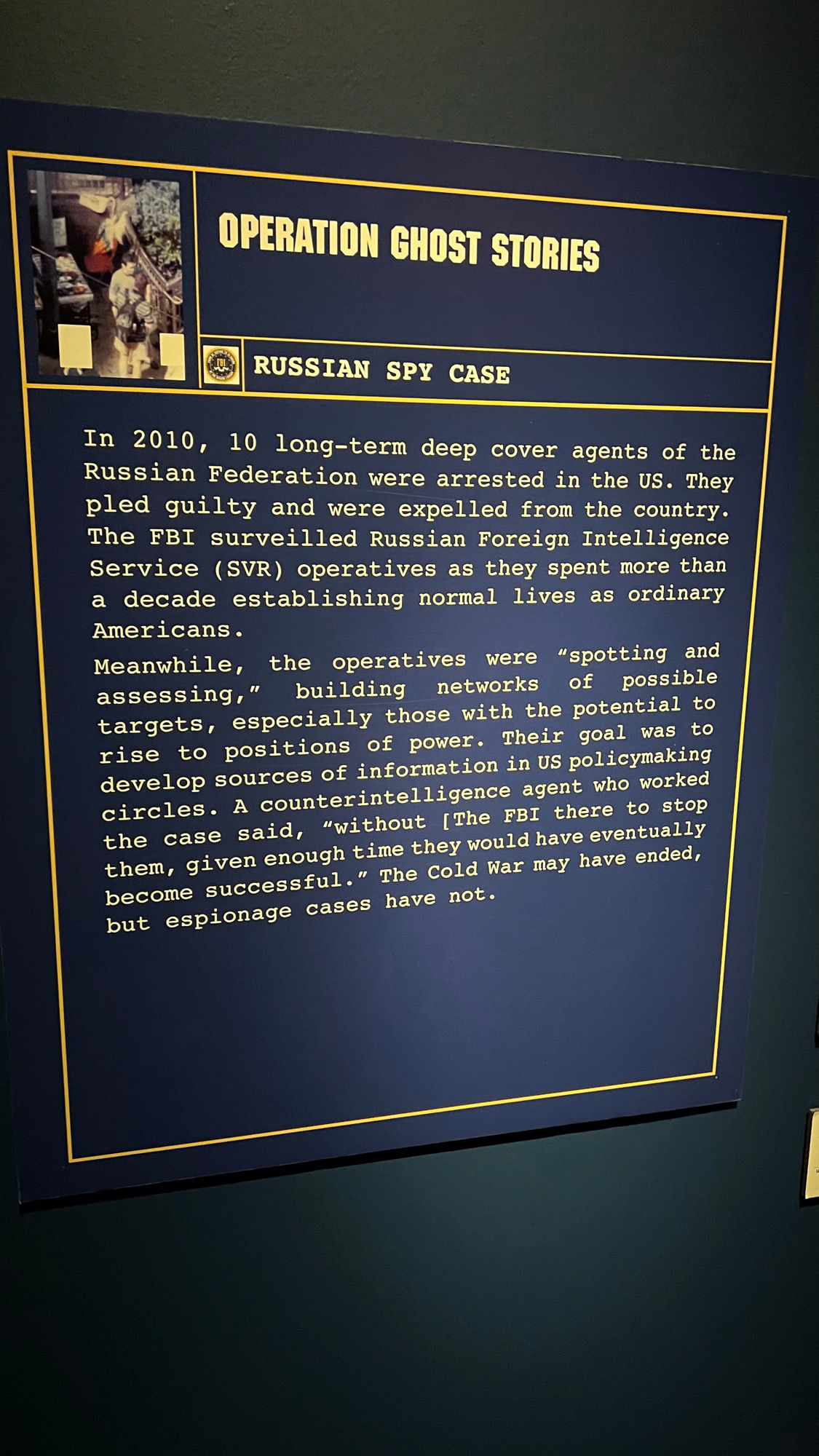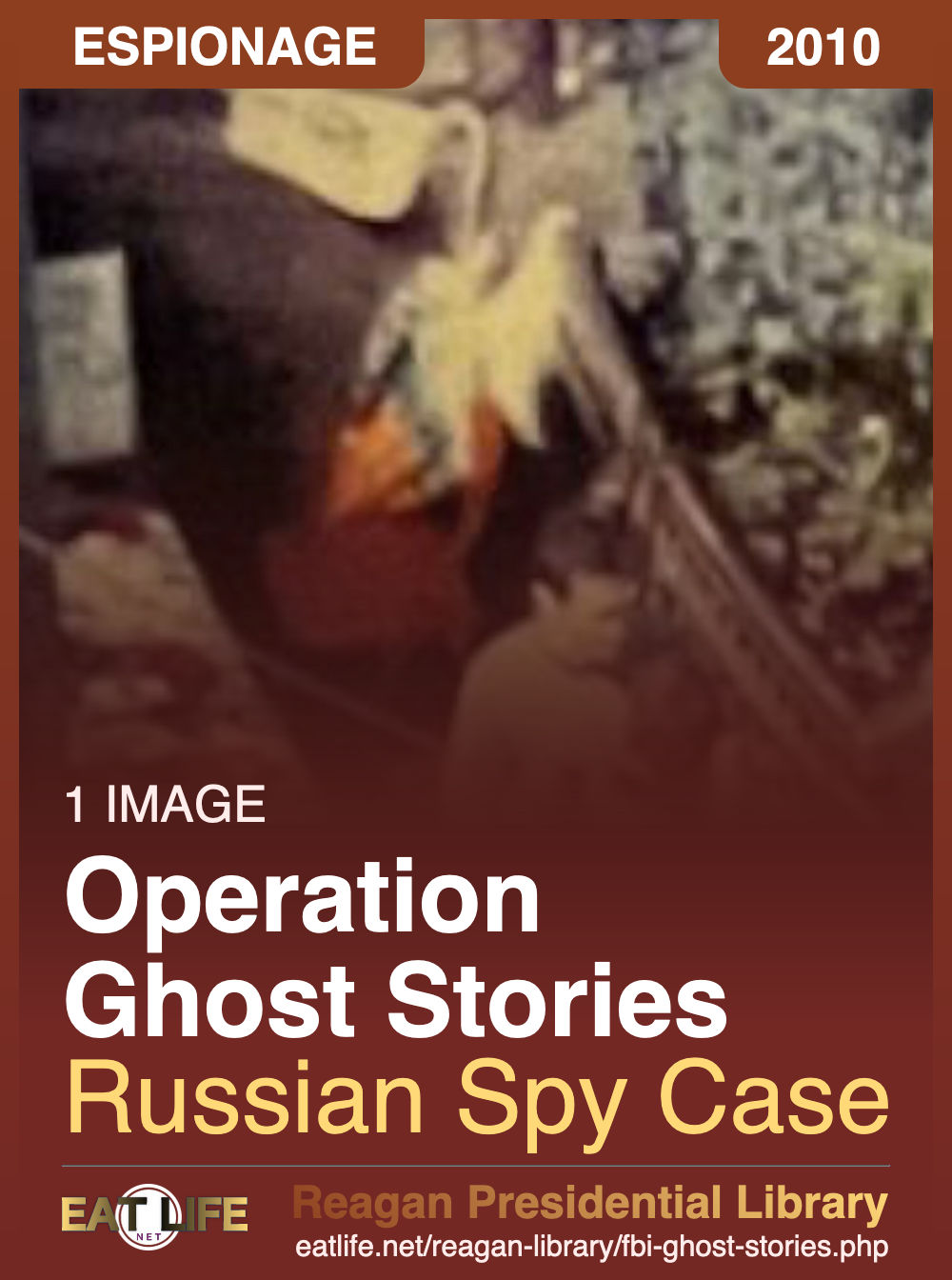
Russian Spy Case
In 2010, 10 long-term deep cover agents of the Russian Federation were arrested in the US. They plead guilty and were expelled from the country. The FBI surveilled Russian Foreign Intelligence Service (SVR) operatives as they spent more than a decade establishing normal lives as ordinary Americans.
Meanwhile, the operatives were "spotting and assessing" building networks of possible targets, especially those with the potential to rise to positions of power. Their goal was to develop sources of information in US policy making circles. A counterintelligence agent who worked the case said, "without the FBI there to stop them, given enough time they would have eventually become successful." The Cold War may have ended, but espionage cases have not.
The FBI surveilled Chapman in 2010 as part of an investigation into deep-cover Russian operatives in the United States. Dubbed Operation Ghost Stories, the case against these "illegals"-a term for intelligence agents operating in the U.S. without diplomatic cover-lasted for more than a decade. It later inspired the creators of the FX series "The Americans."When Anna Chapman moved to Manhattan in 2009, she told her new friends she worked as a realtor. A few months later, an FBI investigation revealed Chapman's secret-she was a Russian spy.
FBI agents and analysts watched the spies assimilate into American society (some by using stolen identities). They married, bought homes, raised children, and held jobs-all while working for Russia's Foreign Intelligence Service.
The spies collected information to send to Russia. They targeted colleagues and friends, seeking to develop sources in U.S. policy making circles. They also conducted support activities on behalf of Russian intelligence.
On June 27, 2010, the FBI arrested 10 illegals, including Chapman. Eleven days later, the spies pleaded guilty to conspiring to serve as unlawful agents of the Russian Federation within the U.S.
The U.S. transferred the spies to Russian custody. In exchange, the Russian Federation released four prisoners who had allegedly contacted Western intelligence agencies.
Between Chapman's arrival in New York and her arrest, law enforcement agents watched her create ad hoc wireless networks to communicate with the official about 10 times.
Although the SVR "illegals," as they were called, never got their hands on any classified documents, their intent from the start was serious, well-funded by the SVR, and far-ranging."The Russian government spent significant funds and many years training and deploying these operatives," said one of our counterintelligence agents who worked on the case. "No government does that without expecting a return on its investment."
Our agents and analysts watched the deep-cover operatives as they established themselves in the U.S. (some by using stolen identities) and went about leading seemingly normal lives-getting married, buying homes, raising children, and assimilating into American society.
Using surveillance and sophisticated techniques, aided by support from intelligence analysts, investigators gathered information to understand the threat posed by the spies as well as their methods, or tradecraft.
OPERATION GHOST STORYSpotting and Assessing
The deep-cover Russian spies may not have achieved their objective, but they were not idle. They collected information and transmitted it back to Russia, and they were actively engaged in what is known in the spy business as "spotting and assessing."They identified colleagues, friends, and others who might be vulnerable targets, and it is possible they were seeking to co-opt people they encountered in the academic environment who might one day hold positions of power and influence.
Perhaps the most famous example of this tactic-the Cambridge Five-took place in Great Britain. Soviet intelligence "talent spotters" were able to recruit Cambridge University students in the 1930s-including future spy Kim Philby-who would later rise to power in the British government and become Soviet operatives during World War II and into the 1950s.
"We believe the SVR illegals may well have hoped to do the same thing here," said a counterintelligence agent.
The SVR was in it for the long haul. The illegals were content to wait decades to obtain their objective, which was to develop sources of information in U.S. policy making circles. (See sidebar.)
Although they didn't achieve that objective, the agent said, "without us there to stop them, given enough time they would have eventually become successful."
After years of gathering intelligence and making sure we knew who all the players were, we arrested the illegals on June 27, 2010. Weeks later, they pled guilty in federal court to conspiring to serve as unlawful agents of the Russian Federation within the U.S.
The plea represented the culmination of a remarkable effort on the part of countless Bureau personnel, including agents, analysts, surveillance teams, linguists, and others.
"Operation Ghost Stories sends a message to foreign intelligence services that espionage threats to the U.S. will not be tolerated," our agent said. "The FBI's counterintelligence mission is to identify, disrupt, and defeat the activities of foreign espionage agents, and we take that job very seriously."
Usually, the critical work of our Counterintelligence Division is carried out in conjunction with our partners in the U.S. intelligence community with the utmost secrecy. Because the public rarely hears about those efforts, it would be easy to forget how real the threat of espionage is.
"And the threat is not limited to the Russians," the agent said. "There are a lot of foreign services who want what we have, and that's why we have agents and analysts in FBI field offices across the country working with other intelligence community partners every day to address these threats."
WIKIPEDIA The Illegals Program
Named by the United States Department of Justice
A network of Russian sleeper agents under unofficial cover. An investigation by the Federal Bureau of Investigation culminated in the arrest of ten agents on June 27, 2010, and a prisoner exchange between Russia and the United States on July 9, 2010.The arrested spies were Russian nationals who had been planted in the U.S. by the Russian Foreign Intelligence Service (known by its Russian abbreviation, SVR), most of them using false identities. Posing as ordinary American citizens, they tried to build contacts with academics, industrialists, and policymakers to gain access to intelligence. They were the target of a multi-year investigation by the FBI. The investigation, called Operation Ghost Stories, culminated at the end of June 2010 with the arrest of ten people in the U.S. and an eleventh in Cyprus. The ten sleeper agents were charged with "carrying out long-term, 'deep-cover' assignments in the United States on behalf of the Russian Federation."
The suspect arrested in Cyprus skipped bail the day after his arrest. A twelfth person, a Russian national who worked for Microsoft, was also apprehended about the same time and deported on July 13, 2010. Moscow court documents made public on June 27, 2011, revealed that another two Russian agents, who Russia alleges were known to the FBI, managed to flee the U.S. without being arrested.
Ten of the agents were flown to Vienna on July 9, 2010, soon after pleading guilty to charges of failing to register as representatives of a foreign government. The same day, the agents were exchanged for four Russian nationals, three of whom had been convicted and imprisoned by Russia for espionage (high treason) on behalf of the US and UK.
Communication Techniques
The Russian agents used private Wi-Fi networks, flash memory sticks and text messages concealed in graphical images to exchange information. Custom steganographic software developed in Moscow was used where concealed messages were inserted into otherwise innocuous files. This program was initiated by using the Control-Alt-E keys and entering a 27-character password, which the FBI found written down. Coded bursts of data sent by a short wave radio transmitter were also used. Other methods included employing invisible ink and exchanging identical bags in public places.In January 2010, Anna Chapman used her laptop at a New York coffee shop on 47th Street to electronically transfer data to a Russian official driving by. Two months later, Chapman used a private Wi-Fi network, possibly at a Barnes & Noble store on Greenwich Street in New York, to communicate with the same Russian official, who was nearby. Chapman used a range extender for her laptop.








